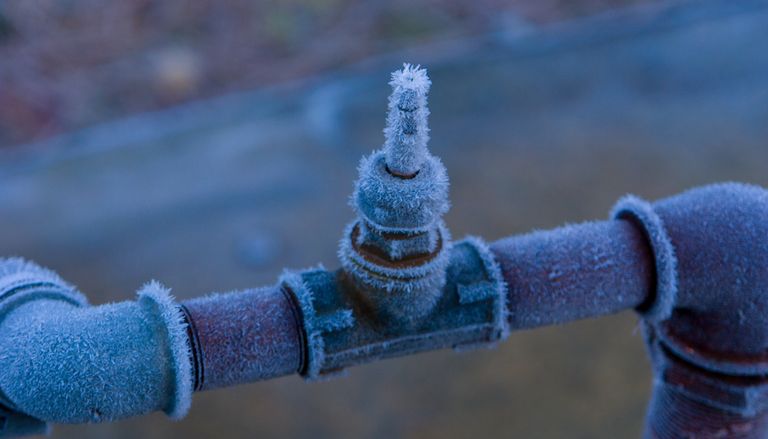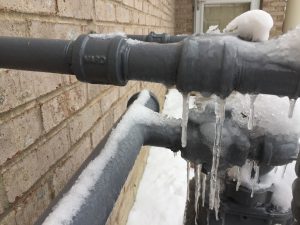Tips for Preventing Frozen Pipes in Winter: Expert Tips
Tips for Preventing Frozen Pipes in Winter: Expert Tips
Blog Article
Have you been trying to find resources on 6 Ways to Prevent Frozen Pipes?

Cold weather can damage your plumbing, particularly by freezing pipelines. Right here's how to prevent it from taking place and what to do if it does.
Intro
As temperatures drop, the threat of frozen pipelines rises, possibly causing expensive repairs and water damage. Recognizing exactly how to stop icy pipes is vital for homeowners in chilly environments.
Recognizing Icy Pipelines
What creates pipelines to ice up?
Pipes freeze when subjected to temperatures below 32 ° F (0 ° C) for expanded periods. As water inside the pipelines freezes, it increases, taxing the pipeline walls and potentially causing them to burst.
Threats and problems
Icy pipelines can cause water supply disruptions, residential property damage, and expensive repairs. Ruptured pipes can flooding homes and create comprehensive architectural damage.
Signs of Frozen Piping
Recognizing frozen pipelines early can avoid them from breaking.
Just how to determine frozen pipelines
Search for decreased water flow from taps, unusual odors or sounds from pipes, and visible frost on revealed pipes.
Prevention Tips
Shielding vulnerable pipes
Cover pipelines in insulation sleeves or make use of warmth tape to safeguard them from freezing temperature levels. Concentrate on pipelines in unheated or exterior areas of the home.
Heating techniques
Maintain indoor spaces sufficiently warmed, specifically locations with pipes. Open cupboard doors to permit warm air to circulate around pipes under sinks.
Protecting Outside Pipes
Yard tubes and exterior taps
Detach and drain yard tubes before winter season. Set up frost-proof spigots or cover exterior faucets with protected caps.
What to Do If Your Pipelines Freeze
Immediate actions to take
If you suspect frozen pipelines, keep faucets available to ease stress as the ice melts. Make use of a hairdryer or towels soaked in warm water to thaw pipelines gradually.
Long-Term Solutions
Structural changes
Think about rerouting pipes far from exterior walls or unheated areas. Add additional insulation to attic rooms, cellars, and crawl spaces.
Updating insulation
Invest in top notch insulation for pipes, attics, and wall surfaces. Proper insulation helps maintain constant temperature levels and lowers the threat of icy pipelines.
Verdict
Protecting against icy pipelines needs positive steps and quick responses. By understanding the reasons, indications, and preventive measures, homeowners can protect their pipes during winter.
5 Ways to Prevent Frozen Pipes
Drain Outdoor Faucets and Disconnect Hoses
First, close the shut-off valve that controls the flow of water in the pipe to your outdoor faucet. Then, head outside to disconnect and drain your hose and open the outdoor faucet to allow the water to completely drain out of the line. Turn off the faucet when done. Finally, head back to the shut-off valve and drain the remaining water inside the pipe into a bucket or container. Additionally, if you have a home irrigation system, you should consider hiring an expert to clear the system of water each year.
Insulate Pipes
One of the best and most cost-effective methods for preventing frozen water pipes is to wrap your pipes with insulation. This is especially important for areas in your home that aren’t exposed to heat, such as an attic. We suggest using foam sleeves, which can typically be found at your local hardware store.
Keep Heat Running at 65
Your pipes are located inside your walls, and the temperature there is much colder than the rest of the house. To prevent your pipes from freezing, The Insurance Information Institute suggests that you keep your home heated to at least 65 degrees, even when traveling. You may want to invest in smart devices that can keep an eye on the temperature in your home while you’re away.
Leave Water Dripping
Moving water — even a small trickle — can prevent ice from forming inside your pipes. When freezing temps are imminent, start a drip of water from all faucets that serve exposed pipes. Leaving a few faucets running will also help relieve pressure inside the pipes and help prevent a rupture if the water inside freezes.
Open Cupboard Doors
Warm your kitchen and bathroom pipes by opening cupboards and vanities. You should also leave your interior doors ajar to help warm air circulate evenly throughout your home.

We hope you enjoyed our post about How to Prevent Your Pipes From Freezing. Thanks so much for finding the time to browse our blog post. Feel free to pause to promote this write-up if you enjoyed reading it. Thanks a bunch for being here. Kindly check up our site back soon.
Request Your Service Report this page